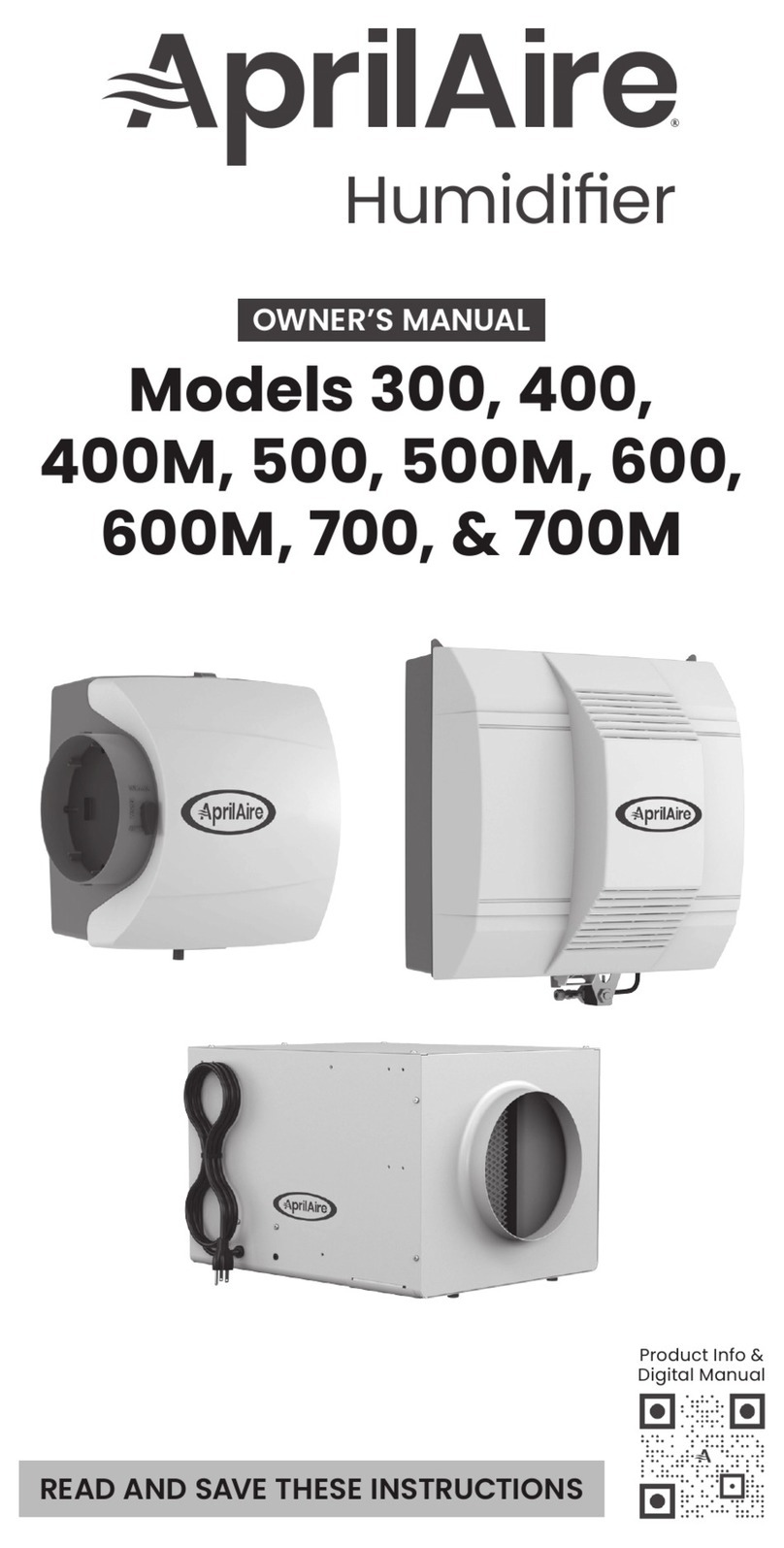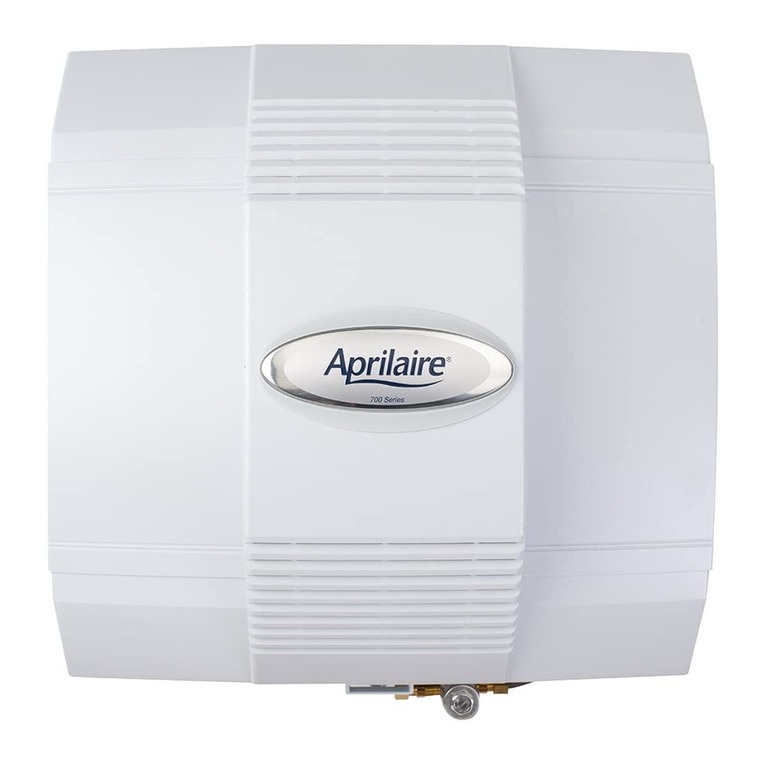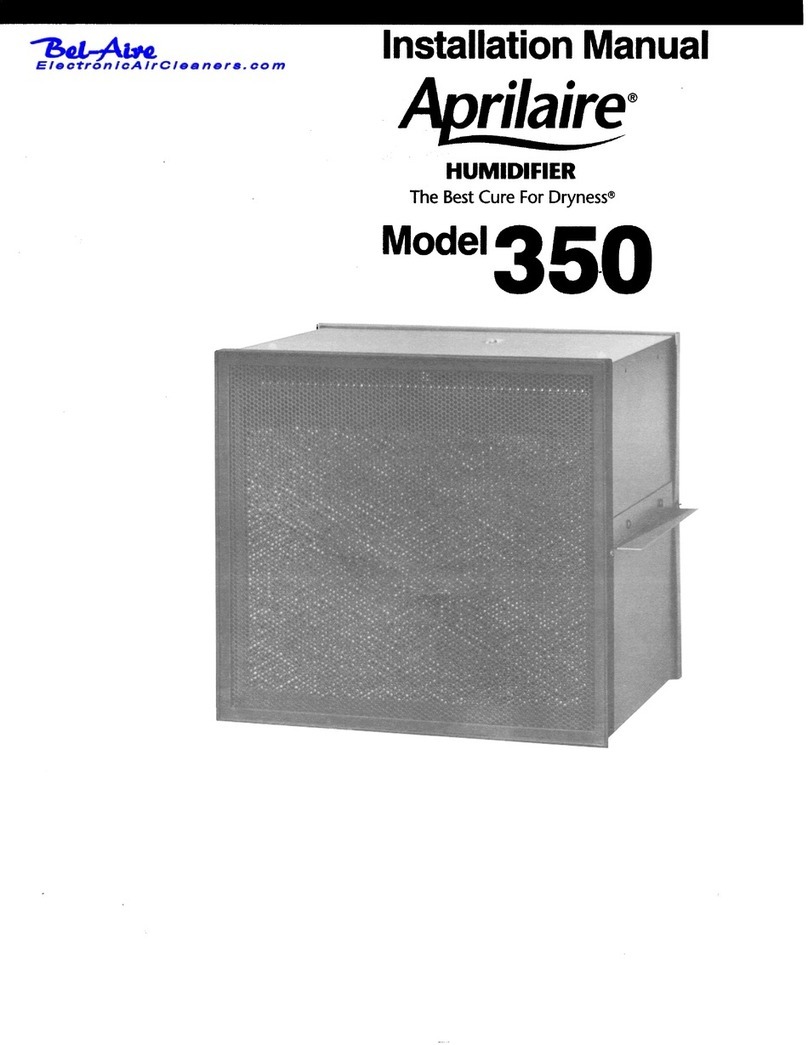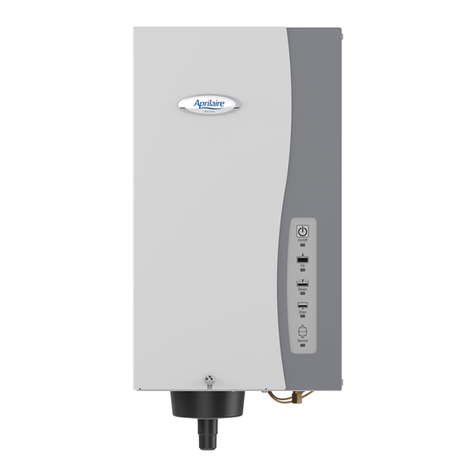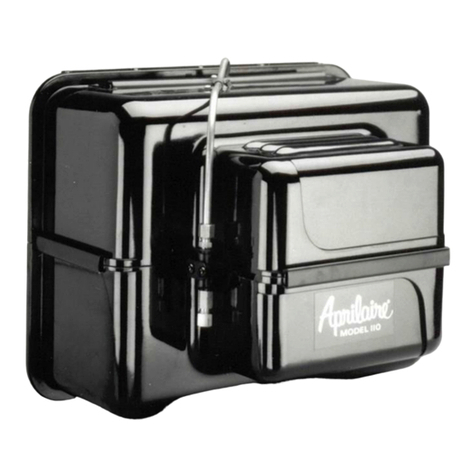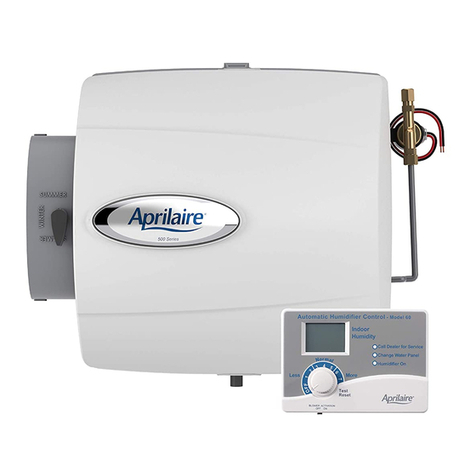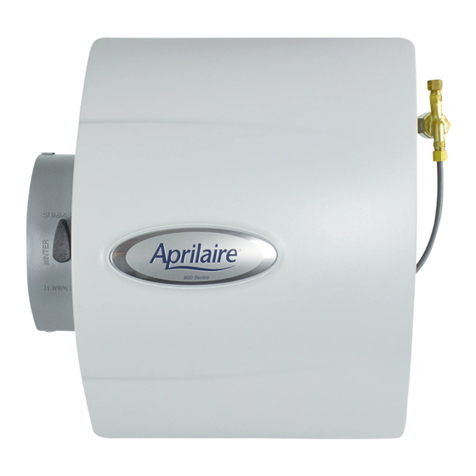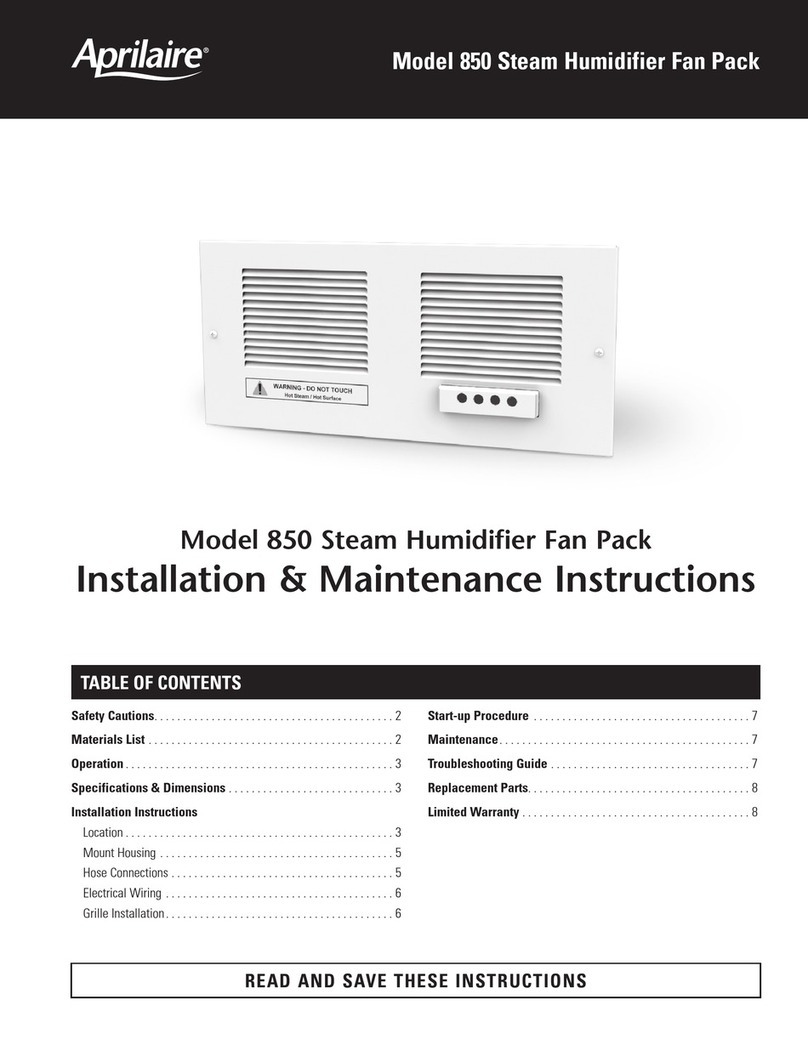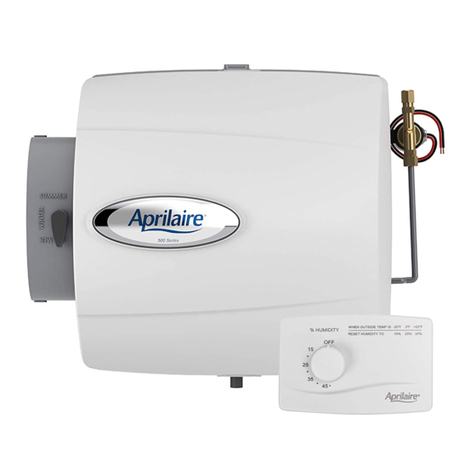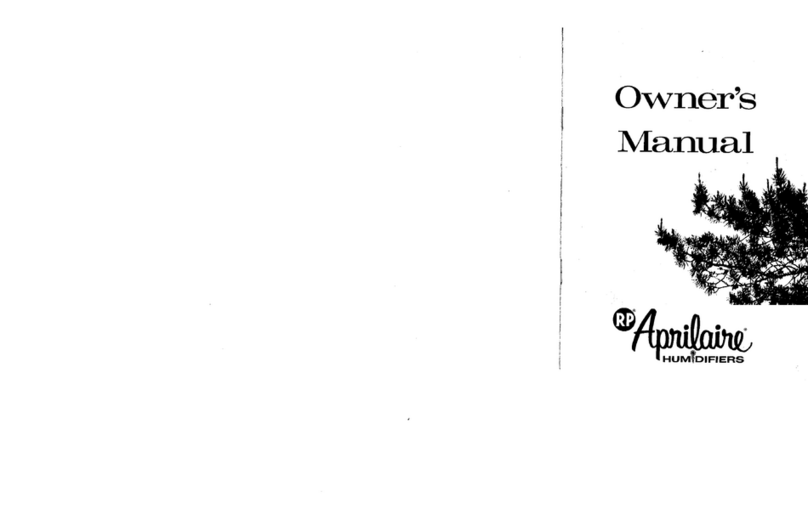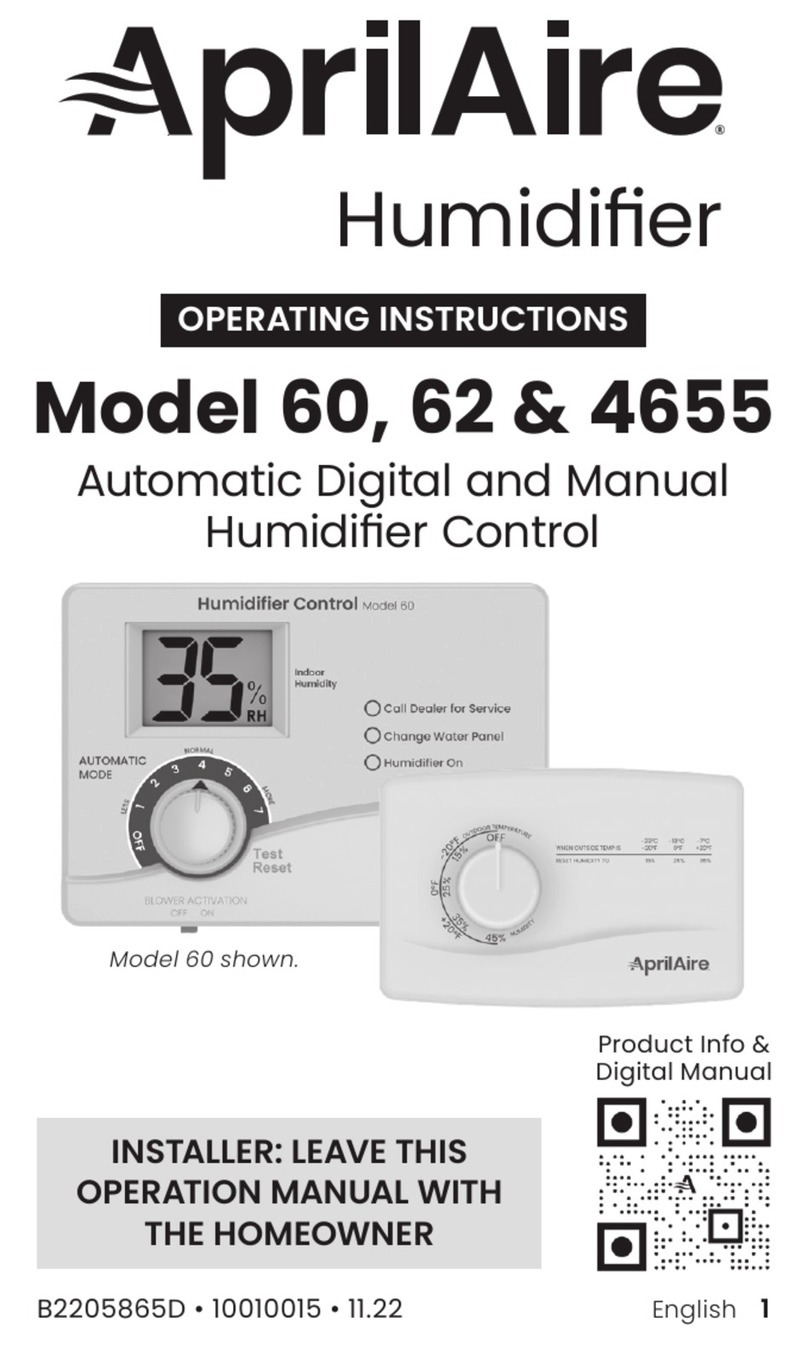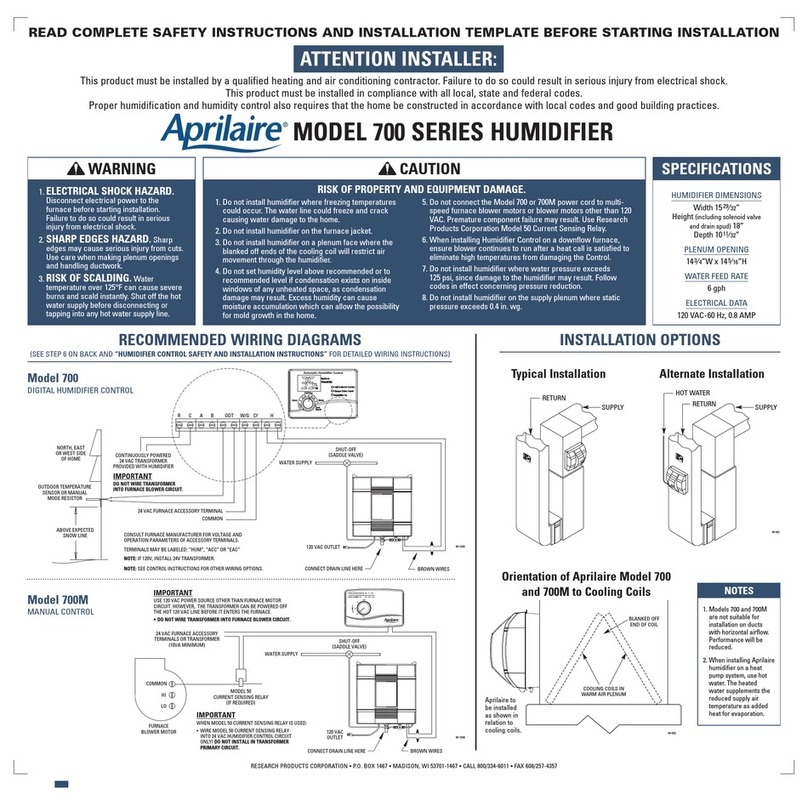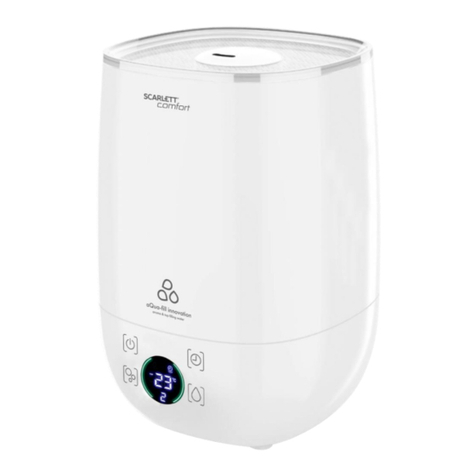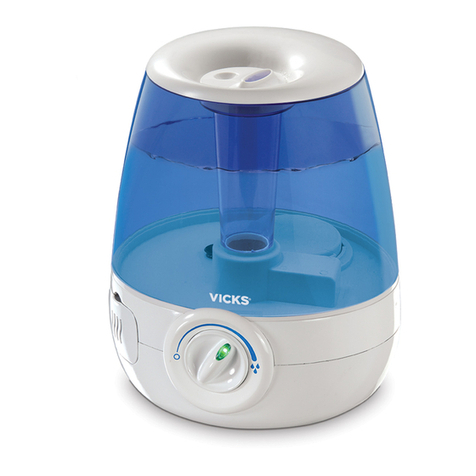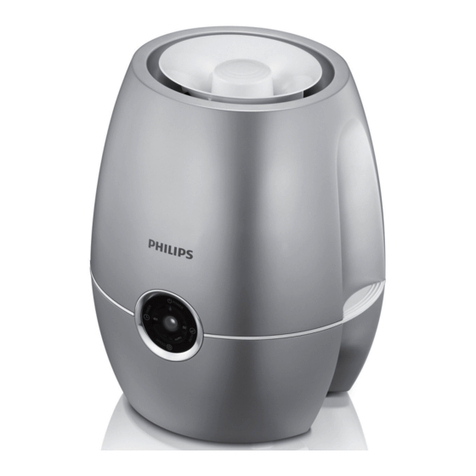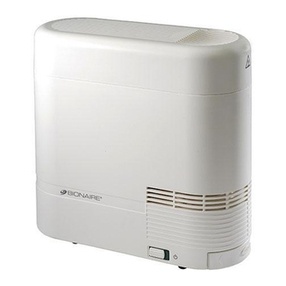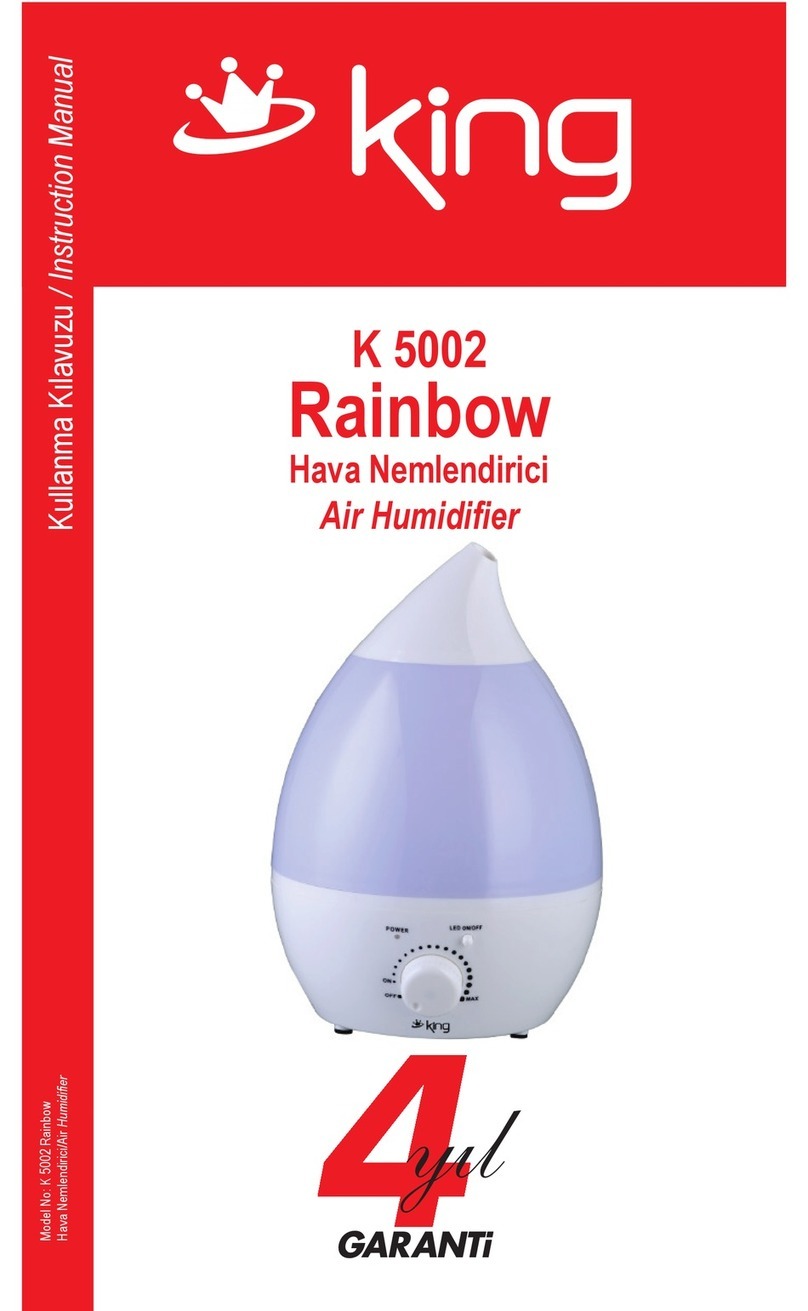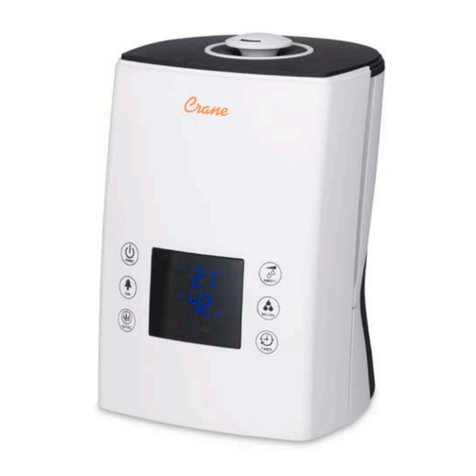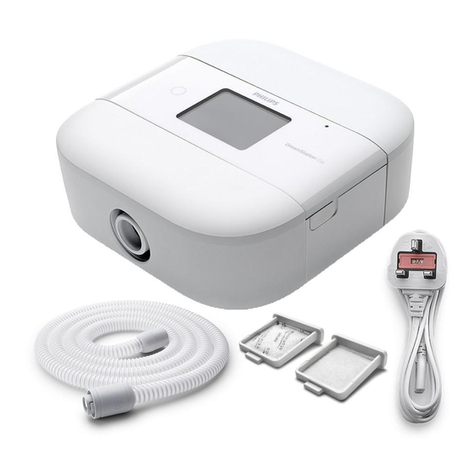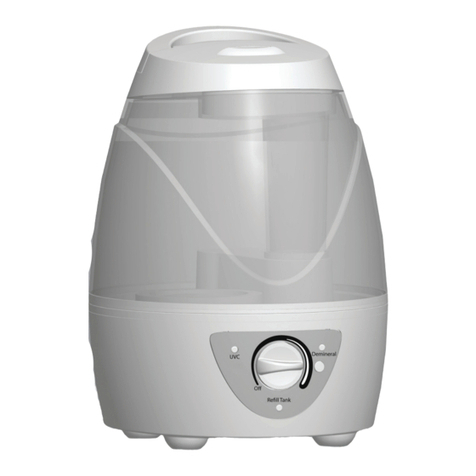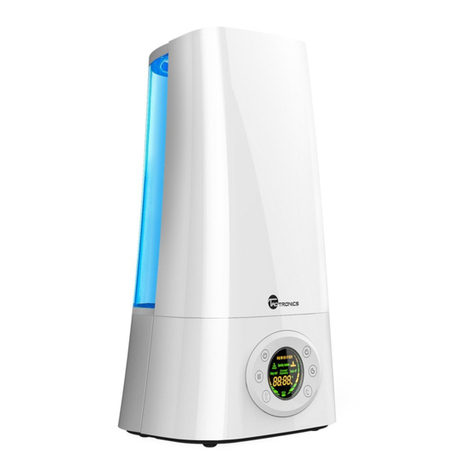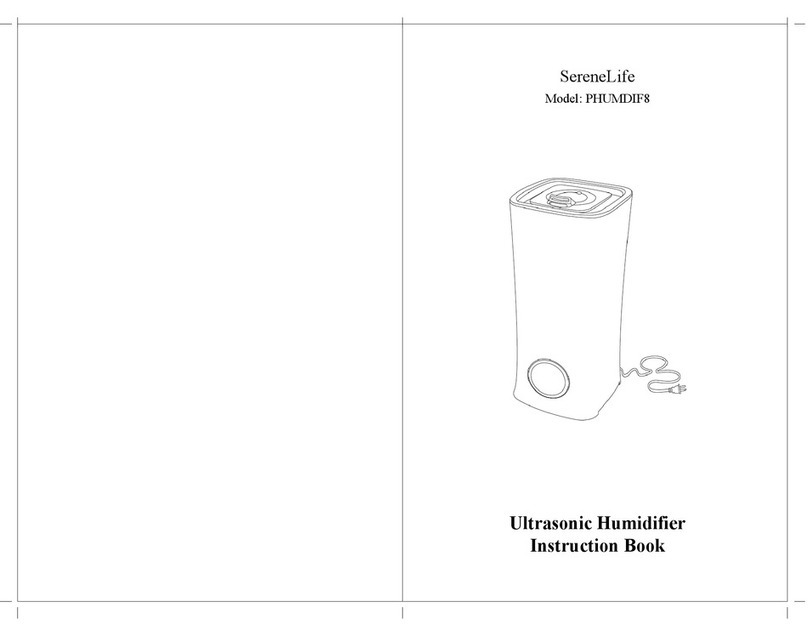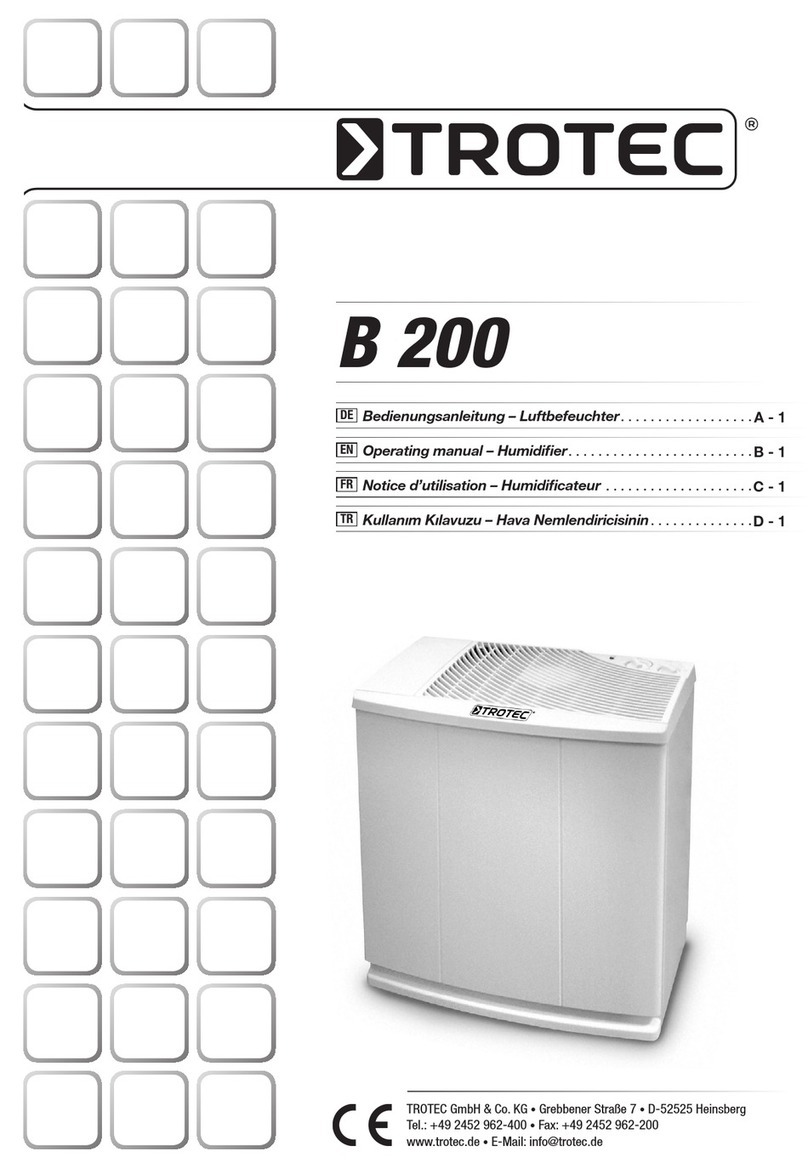
Minerals that are naturally found in water cause the water to be electrically conductive. Water conductivity is measured in micro Siemens per
centimeter (uS/cm). Mineral content, also described as “water hardness” is usually measured in grains per gallon. Because of the variety of
minerals that are found in water, there is no direct correlation between water hardness and conductivity, but generally the higher the mineral
content, the higher the conductivity.
The Model 800 Canister Steam Humidifier is designed to operate on water with conductivity between 125 and 1,250 uS/cm. This correlates
loosely with water with hardness between 3 and 36 grains/gallon. Water that is considered “hard” and also softened water work well in the
Model 800. The humidifier will make steam when plumbed to low-conductivity water but it takes longer to reach nominal capacity.
With low conductivity water, it may take the Model 800 humidifier one week or more of operation to reach rated capacity,
especially if it is wired to operate on 120 volts. When operating on 240 volts, the Model 800 usually will reach nominal capacity
within a few hours, even with lower conductivity water.
As water in the canister boils and turns into steam, minerals are left behind. Minerals remaining in solution increase the conductivity of the
water. Minerals also deposit onto the submerged portions of the electrodes rendering those areas ineffective. As this occurs, the level of water
in the canister rises to expose uncoated electrode surface.
There are benefits and trade-offs to consider when the application allows a choice between hard and softened water:
Hard water: The benefit of hard water is less frequent draining and filling than with soft water, which results in better energy and water
efficiency and more consistent steam output. However, canister replacement could be more frequent with hard water, because hard water scale
coats the electrodes. The harder the water, the more frequent the need for a new canister.
Softened water: The benefit of softened water is longer canister life (depending on water chemistry) than with hard water, because softened
water does not coat the electrodes nearly as much as hard water. However, softened water ions stay in solution to much higher concentrations
than hard water ions. This requires more frequent draining and filling, which results in less energy and water efficiency and less consistent
steam output.
The Aprilaire®Model 800 Canister Steam Humidifier delivers
humidity in the form of steam to the conditioned space via the
HVAC system duct or optional Aprilaire Model 850 Fan Pack.
The humidifier generates steam by energizing two electrodes
that extend into a canister of water. Current flowing between
the electrodes causes the water to boil, creating steam. Water
is introduced to the humidifier through a fill valve to a fill cup
located in the top of the cabinet. The fill cup serves as an overflow
reservoir and provides an air gap between the humidifier and water
source. The steam canister is filled from the bottom. The canister
is seated in a drain cup assembly which includes a drain valve. The
drain and fill valves work together to maintain water level in the
canister to deliver the rated steam capacity based on the electrical
conductivity of the water and to temper drain water. See Figure 1
for representation of fill and drain system and canister.
Steam is delivered into the airstream through a dispersion tube
mounted in the HVAC system ductwork. Openings in the dispersion
tube are fitted with “tubelets™” which extend into the center of
the tube. The design of the dispersion tube and tubelets distribute
steam over a wide area in the duct and direct any condensed
moisture back into the steam hose.
This humidifier is able to produce steam at various capacities
depending on the voltage and current applied. The unit can be
wired to use an input voltage of 120, 208 or 240 Volts and input
amperage can be set to 11.5 or 16.0 amps by changing a dip switch
on the control circuit board (see the Electrical Power Wiring &
Shut Off Switch section). Configure the unit appropriately for the
application (see Table 1 for capacity specifications).
PRINCIPLES OF OPERATION
FIGURE 1 – Fill and Drain System and Canister
90-1522
Outlet
Drain
Supply
Water
Drain Cup
Drain Valve
Canister
Electrodes
High Water
Level Sensor
Flow Control
Orifice
Inlet
Fill Valve
Overflow
Fill
Fill Cup
WATER QUALITY
3
